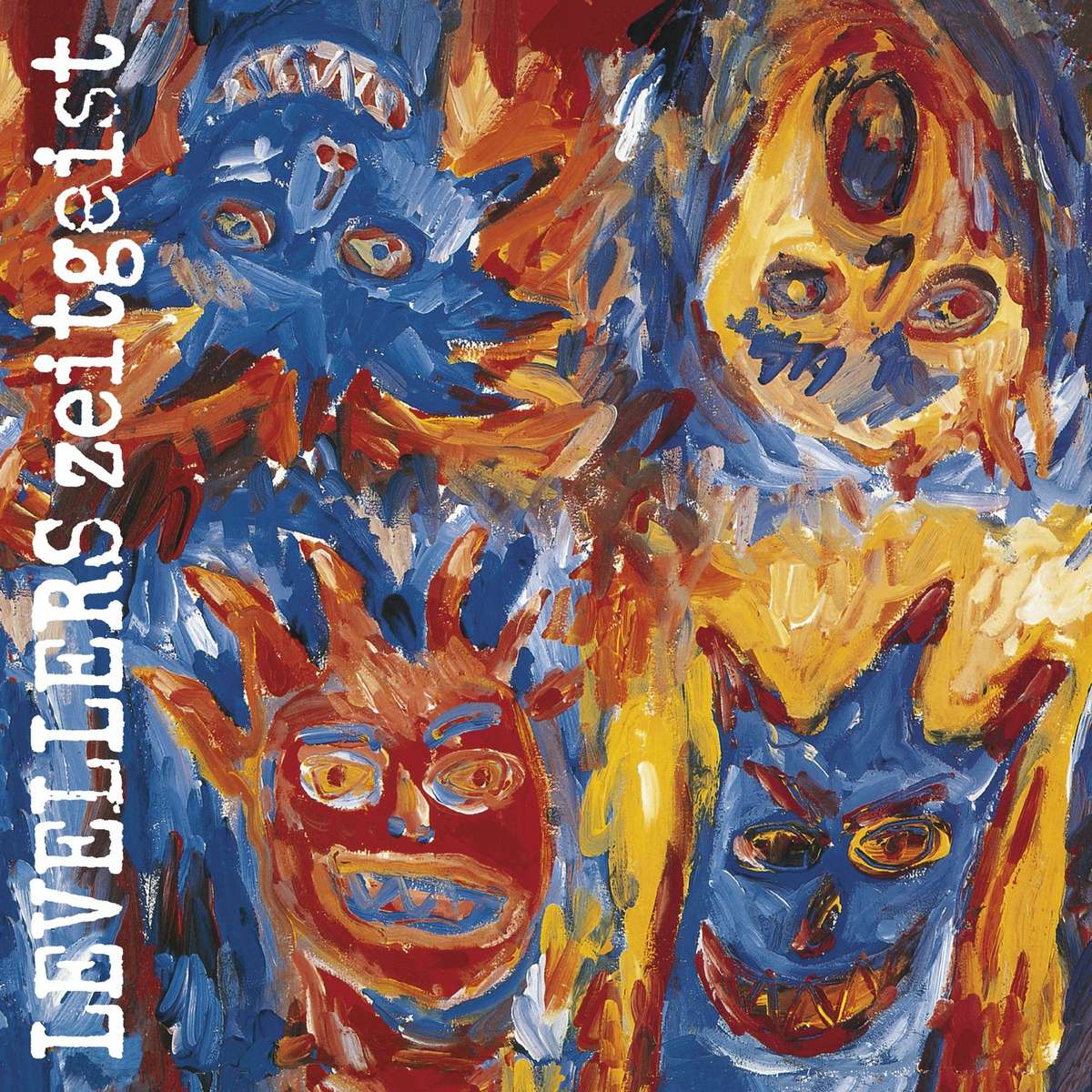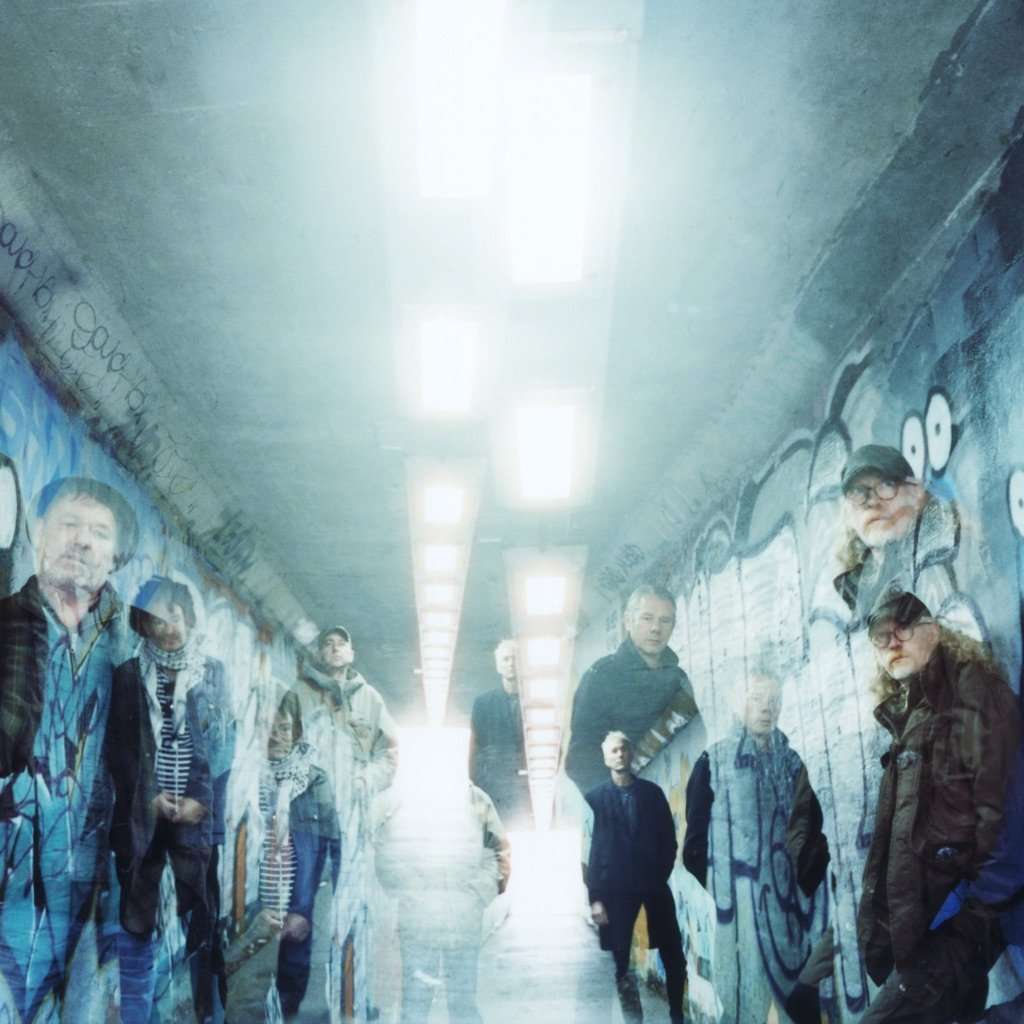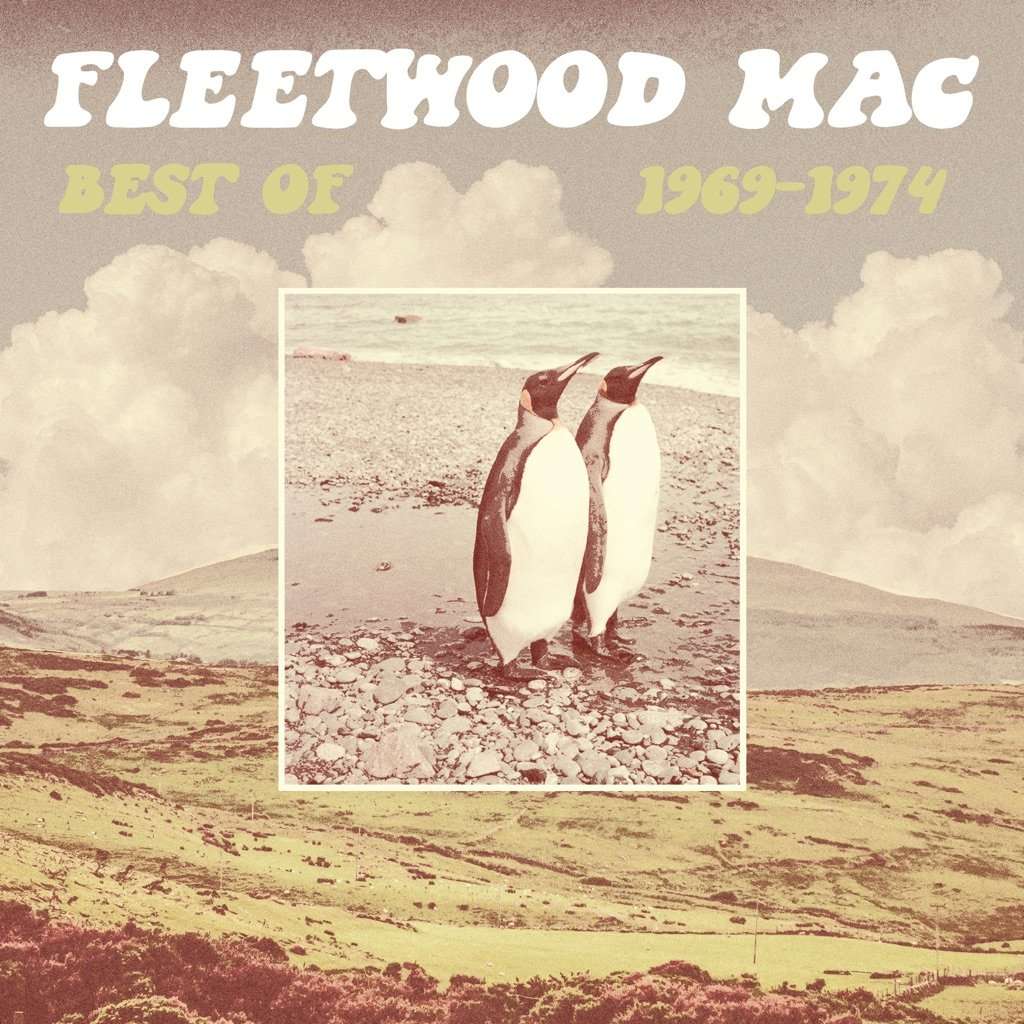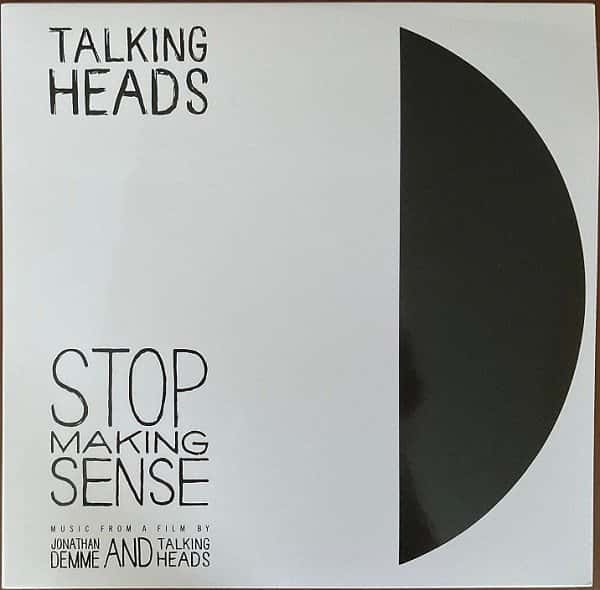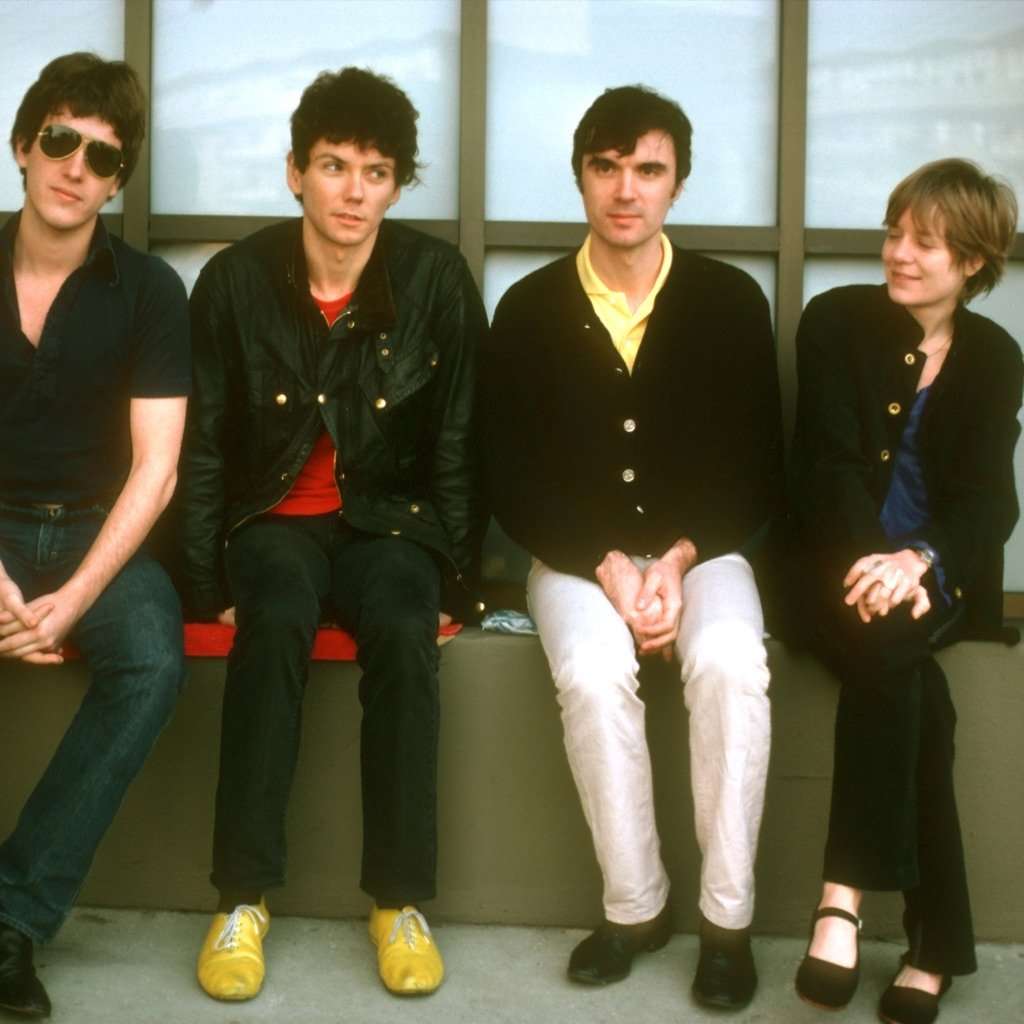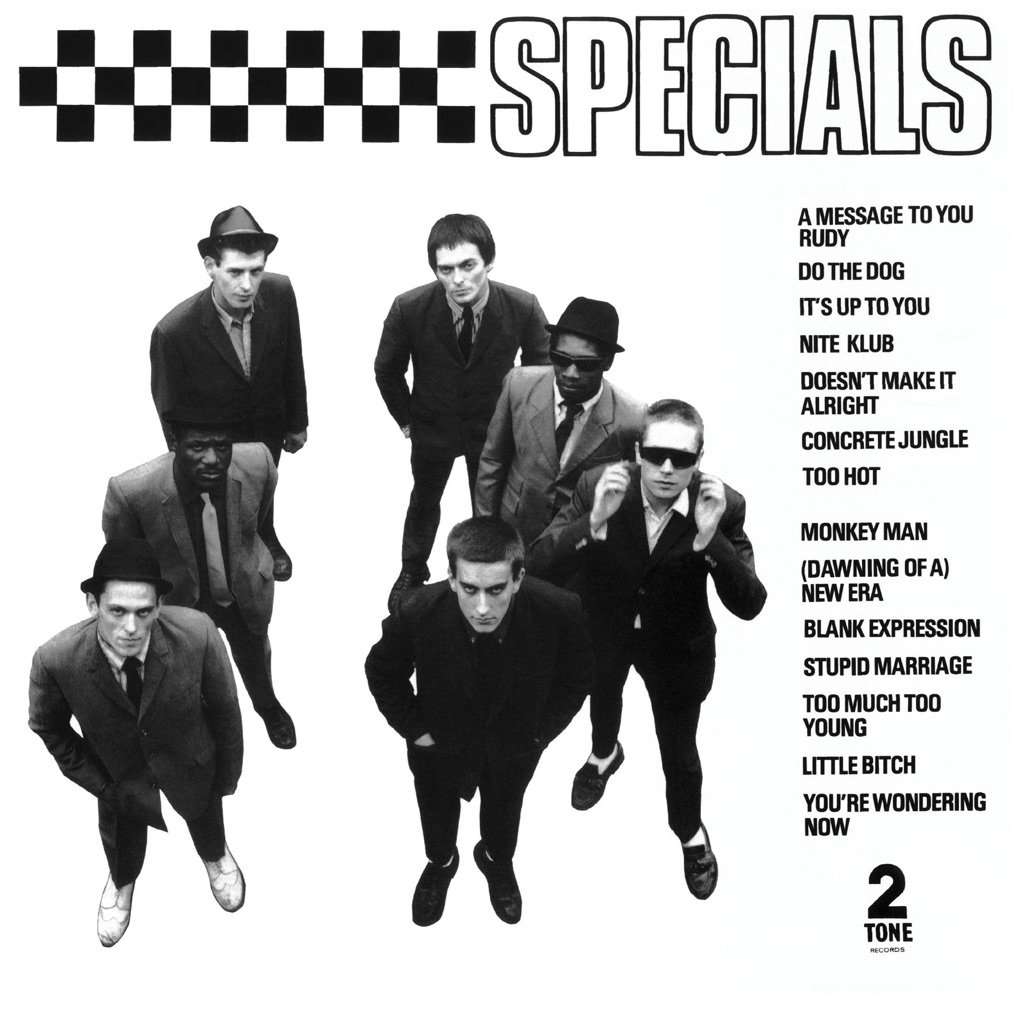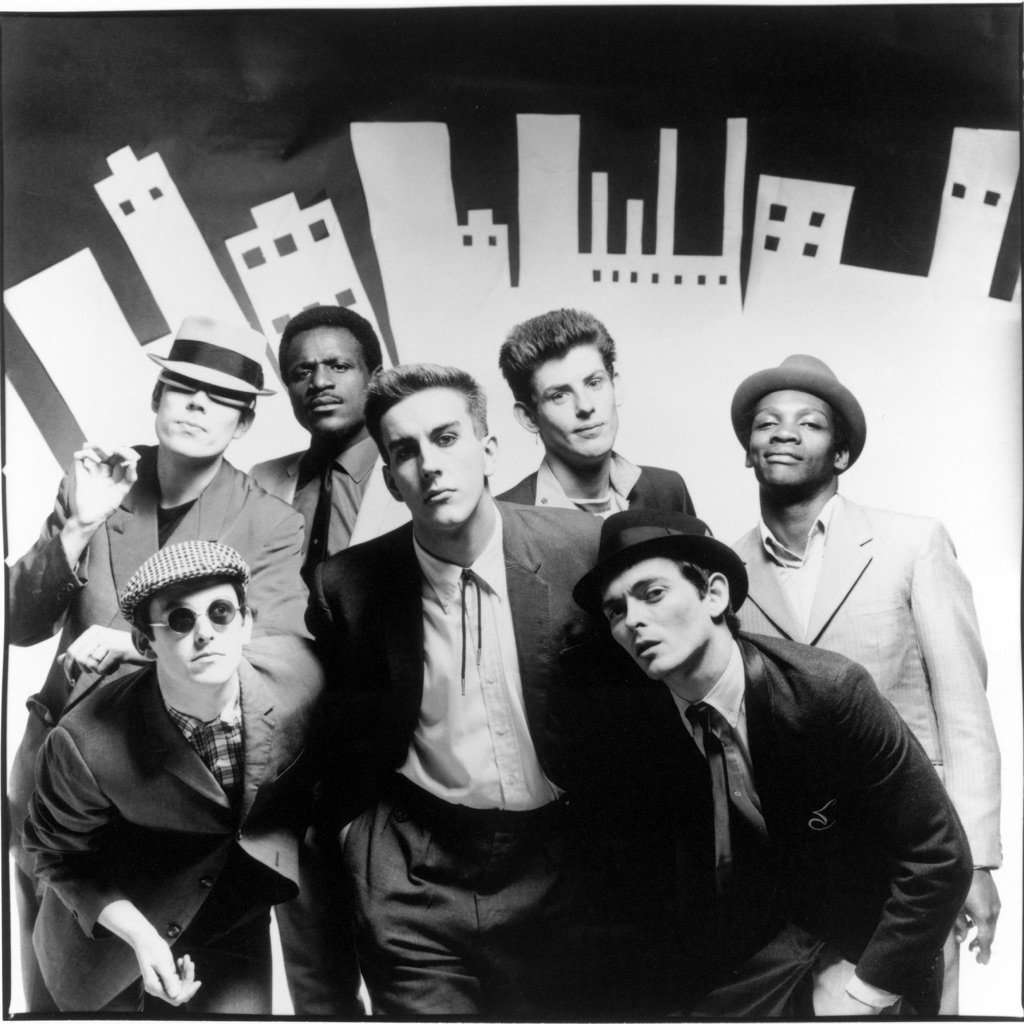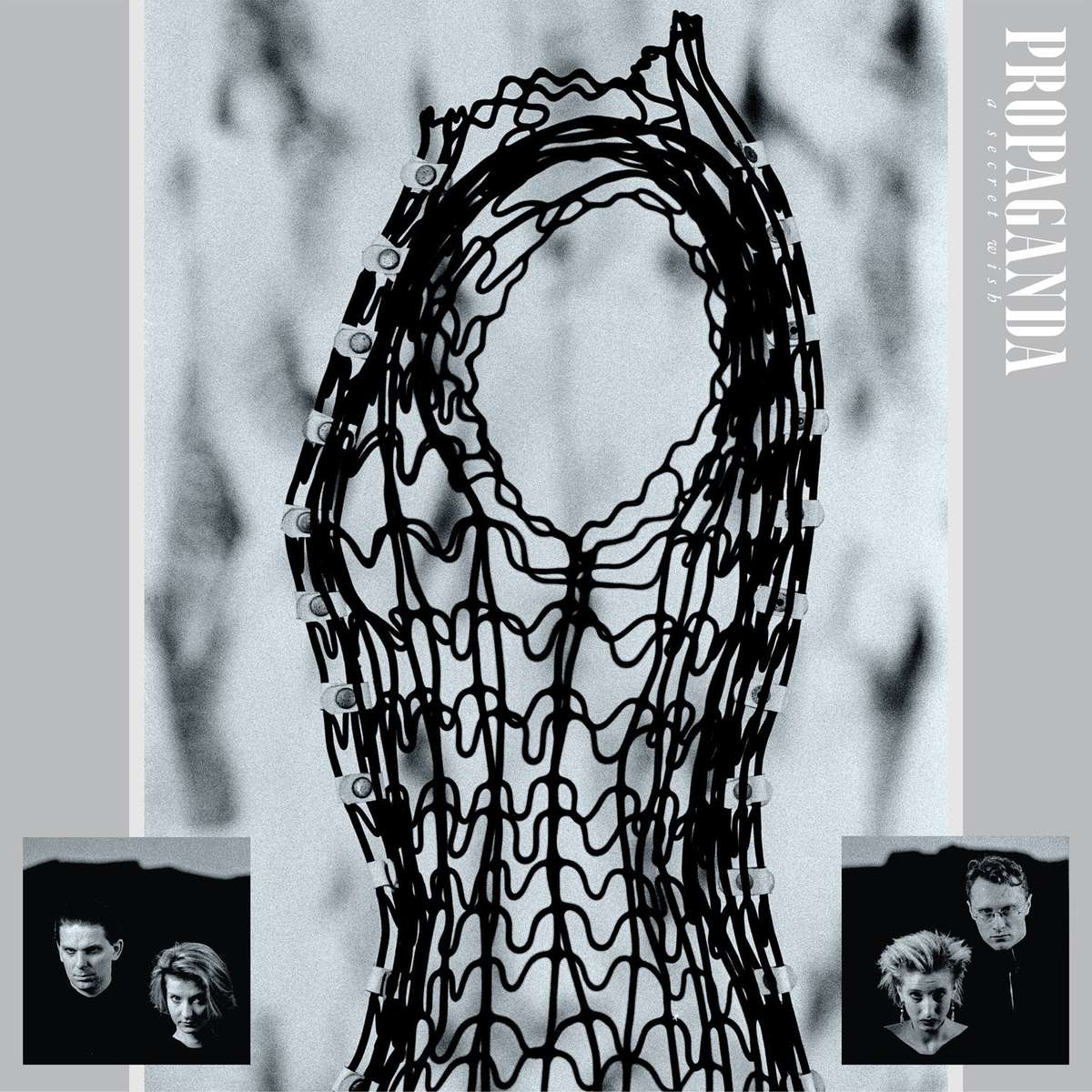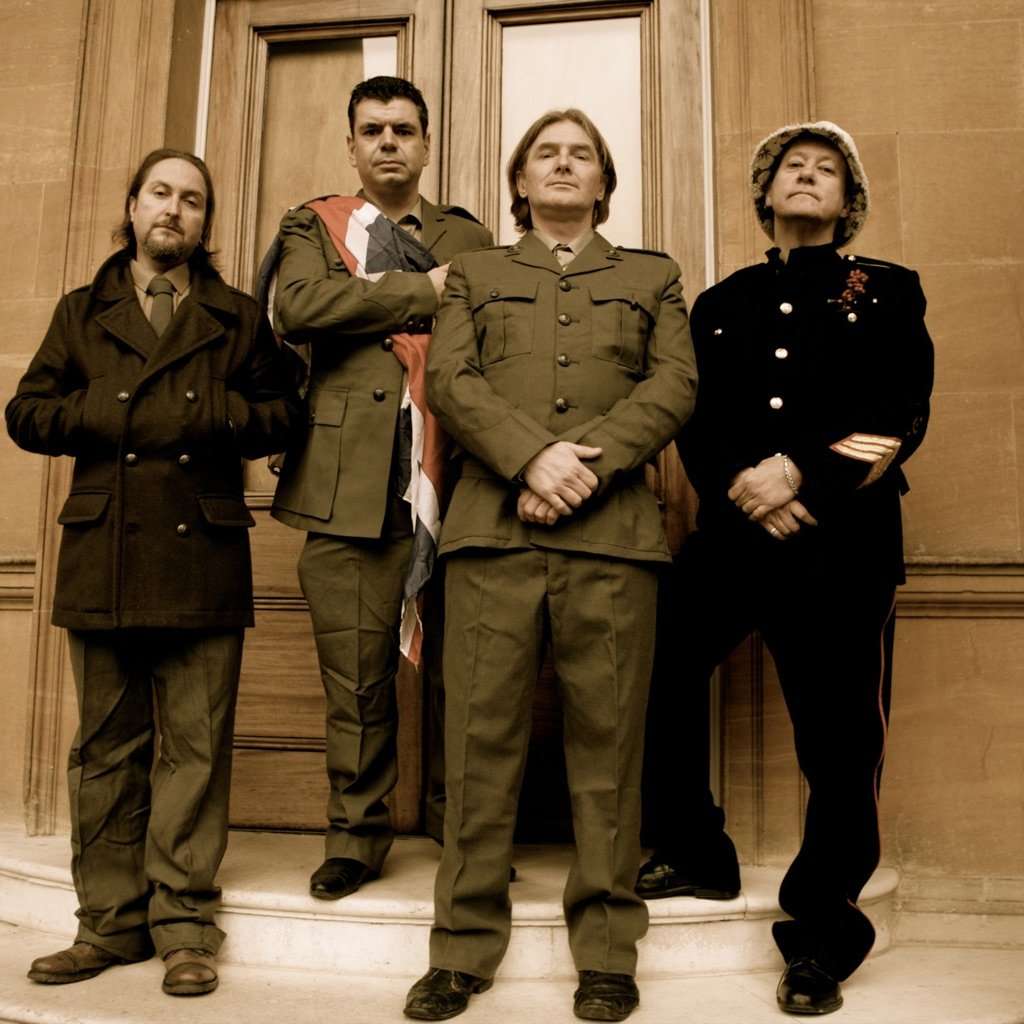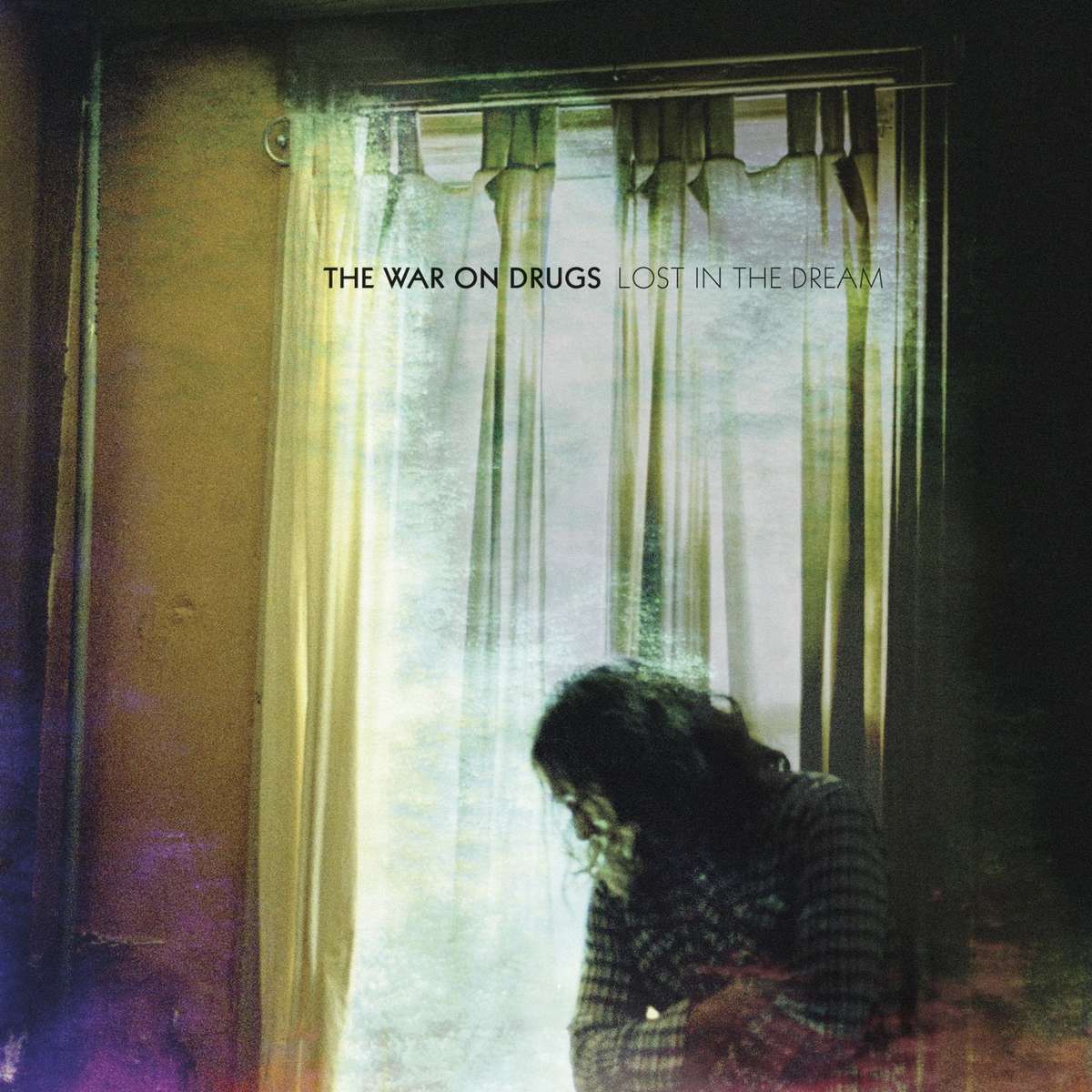A Sonic Journey Through Euphoria and Reflection in Timeless Sounds
De La Soul Is Dead 💿
The Ground-Breaking Funeral 🥀
In 1991, De La Soul crashed the hip-hop scene with De La Soul Is Dead, an audacious declaration that marked a profound shift not just for the group, but for the genre itself. With a title that seemingly mourns their own youthful innocence, the album turned the conventional wisdom of hip-hop upside down, sculpting a narrative filled with satire and self-reflection. Rather than succumbing to the pressures of mainstream success after the groundbreaking 3 Feet High and Rising, De La Soul enthusiastically buried their former selves and emerged with something audaciously different. This was not only an album; it was a statement, an artistic rebirth, and a testament to their ethos of creativity over conformity. 🌀
Themes of Identity and Authenticity 🎭
Drenched in rich musical textures, De La Soul Is Dead boldly confronts societal expectations while exploring themes of identity and authenticity. The skits interwoven within the album make the listening experience feel like an intricate tapestry of thoughts, emotions, and critiques. With tracks like Bitties, the group humorously contrasts the surface-level tropes of commercial hip-hop against their nuanced realism. The stark use of skits also serves to fulfill a dual purpose—comic relief and poignant commentary—creating a rollercoaster ride of emotions deeply resonant even today. Its a daring choice that forges a connection to their lived experiences while critically engaging with the culture surrounding them. ❤️
Sampling Smarts: The Evolution of Sound 🎧
One of the albums remarkable features lies in its sampling. While 3 Feet High and Rising was imbued with a playful spirit, De La Soul Is Dead ventures into darker, more complex soundscapes, reflecting their maturation as artists. The seamless integration of samples—from the Clash to Johnny Harris—demonstrates their mastery of the art of sampling in hip-hop. Songs like Aint Nobody represent the innovative sampling techniques that would set the groundwork for future artists, such as Kanye West and J Dilla, who saw how layered sampling could transcend mere homage into something profoundly transformative. 🎶
The Impact on Hip-Hop Culture 🔥
De La Soul Is Dead also marks a pivotal moment in hip-hop culture, where artistry and commercialism began to clash more than ever. The early 90s were a time when gangsta rap ascended, and the whimsicality of De La Soul was an anomaly—yet the duo carved their niche amid the influx of raw lyricism and street authenticity. The idea of social conscious versus fashionable violence in their lyrics may be perceived as unconventional, yet they paved the way for a new form of hip-hop that encouraged introspection. This would resonate with artists like A Tribe Called Quest and later, artists within the underground scene, who sought to balance lyrical integrity with commercial viability. 🌍
Personal Reflections and Creative Growth 🌱
Behind the scenes, the album was born out of a tumultuous period in the group’s life, particularly marked by pressures from their evolving fame. The pain and humor threaded throughout the album mirror the highs and lows of their journey, revealing deeper layers of personal growth. Longing for artistic freedom and a break from being pigeonholed, the trio took the brave step of challenging their previous sound. De La Soul Is Dead is laced with vulnerability, with each track urging listeners to explore their complexity—a musical therapy session for both the artists and fans alike.
The Reception: A Mixed Bag, A Lasting Legacy 📦
When it was released, the album received a polarized reaction from fans and critics alike—some cherished its audacity, while others lamented the transition from the playful positivity of their debut. This very divide framed the conversation around the album, solidifying its status as a cult classic. Over time, as hip-hop evolved, the keen observers recognized the prescient details—its commentary on commercialism and authenticity layered amidst vivid storytelling became a vital blueprint for countless artists exploring similar themes. De La Soul was grasping at the complexity of existence; they weren’t just making music, they were crafting a cultural movement.
Echoes Through Time: Relevance Today 🌊
Fast forward to the current landscape of hip-hop, artists are continually drawing from De La Soul Is Dead. Within the realm of social media and streaming, the perennial questions of identity and authenticity echo through the genre more than ever. This album reminds us that artistry thrives on evolution—staying true to one’s roots while letting curiosity lead the way. De La Soul crafts a timeless narrative that resonates across generations, encouraging artists and fans alike to embrace complexity, challenge norms, and ultimately keep the dialogue alive. ✊✨
In the annals of music history, De La Soul Is Dead remains a critical work not simply for its innovative sound, but for its heart—a two-way reflection that invites listeners to partake in the brave vulnerability of creation, a lesson that echoes through time. 🔊
Zeitgeist ✨
A Foot Stomp on History 🚶♂️💥
In 1995, as grunge faded and pop-punk started its ascent, the Levellers released Zeitgeist, an album that encapsulated not just a sound but a vibrant wave of cultural and political sentiment. The term zeitgeist itself means spirit of the age, a fitting title for an album that reflects the fiery activism and tumultuous politics of its time. Bursting with acoustic energy and lyrical passion, the Levellers aimed to channel the discontent of a generation yearning for change—while ensuring listeners’ feet were tapping along merrily.
The Soundtrack of a Movement 🎶✊
At its core, Zeitgeist stands as more than just an album; its a musical banner for those disillusioned by mainstream society. With tracks like The Riverflow and This Garden, the Levellers strike a balance between catchy folk hooks and fervent political messages. Their sound, an intoxicating blend of punk rock, Celtic influences, and folk traditions, not only democratized music but also invited listeners to engage in conversation about the pressing issues of the day, such as environmentalism and social justice.
Despite the Levellers wild success in the UK, especially on the festival circuit, they were often dismissed in certain literary circles as mere purveyors of feet-stomping revelry. Yet, the depth of their lyrics reveals a band keenly aware of the worlds inequities, challenging their audience to think critically while dancing passionately.
Recording: An Atmosphere of Authenticity 🎤🌍
Zeitgeist was recorded on the cusp of digital revolution—a transformative period for music production. Interestingly, the Levellers chose to embrace traditional recording methods, opting to lay down tracks in the beloved rural setting of the Ridge Farm Studio, located in the English countryside. This idyllic environment married beautifully with their organic sound. The bands determination to keep their creative process rooted in authenticity led to a sound that felt raw yet masterful—a sonic tapestry woven from live energy rather than pixelated perfection.
Interestingly, the band recorded in a way that embraced imperfections and live takes—elements that heightened the emotional resonance of the album. This dedication to an organic sound might have made them seem anachronistic to some in the burgeoning digital age, yet it solidified their place as stalwarts of sincerity.
A New Generation, a New Levellers? 🌱
“Zeitgeist” was received with open arms by longtime fans, but it also attracted a fresh wave of younger listeners discovering the Levellers music through their festival performances. The rise of folk-punk was instrumental in making their sound relevant once more, providing a launchpad for contemporary artists like Frank Turner and Flogging Molly. These artists, echoing the Levellers’ mantra of social consciousness, have drawn on that spirited sound and sense of community, proving that Zeitgeist was not just a moment in time but a lasting influence on generations to come.
A Legacy Beyond Borders 🌍✨
While the Levellers carved a niche for themselves, some may not know that Zeitgeist also foresaw the burgeoning festival culture that bloomed in the UK and beyond in the late 90s. The band’s relentless touring and energetic live performances sparked a passionate communal experience where music blended with activism, a hallmark of what would come to define the UKs vibrant festival scene. Their ability to galvanize crowds, build solidarity, and create movement resonates even today, as political awareness surges once more in the face of climate anxiety and social injustice.
Closing the Circle: The Timelessness of Zeitgeist 🔄⏳
Fast forward to the present, and its clear that Zeitgeist continues to echo in the modern cultural landscape. The themes of activism and social responsibility in the Levellers music are more prevalent now than ever, as younger generations rally against systemic injustices they confront daily. This reclamation of the spirit of the age from 1995 speaks volumes about the cyclical nature of political music and its role in liberation movements.
Although the Levellers remain somewhat of an unsung hero in historical narratives about 90s music, Zeitgeist is a jewel in their discography that deserves rediscovery. With its exhilarating fusion of rhythms, activism, and heart, the record reminds us that through music, we can find our voices and champion the changes we wish to see in the world. So, the next time you feel the thrum of protest in the air, remember: the Levellers were marching to that beat long before it became fashionable again.
So, Here We Are: Best Of Doves 🎶
🌌 A Sonic Journey Through the Skies of Manchester
With So, Here We Are: Best Of Doves, listeners embark on an audacious journey through the sonic landscapes crafted by the Manchester band, Doves. The compilation takes us through the bands illustrious career, highlighting their ability to blend post-rock, shoegaze, and Britpop into a sound thats uniquely their own. Formed at the dawn of the millennium, Doves have influenced a generation of musicians, channeling the essence of their gritty urban surroundings into melodious tales that resonate universally.
🎵 From Underdog to Cult Heroes
In an era rife with flamboyant pop stars and overproduced synth-heavy tracks, Doves emerged as relatable underdogs, channeling a raw emotional energy into their recordings. So, Here We Are encapsulates this ethos, curating hits like There Goes the Fear and Black and White Town, tracks that elegantly capture the zeitgeist of the early 2000s. The albums name itself, a nod to their perseverance and evolution, echoes the sentiments of many who found solace in their alternative sound—a reminder that it’s okay to feel lost, as many have felt the same way.
🌈 Reviving the Art of the Full Album
One remarkable aspect of Doves’ work is their commitment to the traditional album format, something that feels increasingly rare in today’s single-driven music world. “So, Here We Are” not only highlights their most cherished singles but also embeds deeper cuts that reveal the band’s intricate artistry. Track Sky Starts Falling unpacks layers of melancholy that envelop listeners, reminding us that not all gems lie in the hit parade. It’s a call to appreciate the journey rather than merely the destination. This reverence for full narratives aligns them with an ethos reminiscent of classic rock bands like Pink Floyd, who spun tales that invited listeners to explore, contemplate, and feel.
🏙️ The Dusty Studio Magic
While recording sessions for their albums are relatively documented, the story behind the studio work for So, Here We Are remains a treasure trove of lesser-known facts. Doves recorded much of their music at the iconic 80 Hertz studio in Manchester—a location once steeped in the rich history resonating from the city’s turn-of-the-century industrial background. The spaces unpolished charm perfectly matched Doves aesthetic, often capturing spontaneous moments that sparked musical breakthroughs. Their lush harmonies were brought to life against walls that once echoed with laughter and toil, a fitting backdrop for a band known for their ability to juxtapose urban grit with ethereal beauty.
💔 Evolving Themes of Love and Loss
For Doves, the themes of love and loss run deep, often intertwining with their exploration of lifes complexities. Tracks like Sea Song invoke nautical imagery, suggesting a voyage through emotional tides. It’s a poignant reminder that even in the tumultuous seas of life, beauty can be found in vulnerability. This thematic evolution resonates powerfully today, as the world continues to grapple with uncertainty and existential introspection. In essence, Doves stand as a reminder that music’s role transcends mere entertainment; it serves as a lifeline in turbulent times.
📜 The Legacy Continues
Fans of Doves have always been an impassioned lot, celebrating the band’s ability to craft anthems for the weary hearts. The reception of So, Here We Are is a testament to this fervor, as new listeners discover the band’s timeless ability to merge emotional depth with melodic mastery. Their influence extends beyond just the soundwaves—Doves have inspired countless artists, from the ambient tones of The xx to the lush orchestrations of Florence + The Machine. In a musical landscape where individuality often fades, Doves remain a shining example.
🌟 A Cultural Touchstone
Ultimately, So, Here We Are: Best Of Doves isnt just a trip down memory lane for long-time fans; it serves as a cultural touchstone for a generation seeking authenticity in their playlists. Now, as the world faces increasing isolation and uncertainty post-pandemic, the soothing narratives woven into Doves music feel especially poignant, encouraging listeners to embrace both the highs and the lows of the human experience. Their sound continues to echo, reminding us that in the grand symphony of life, we are all, in some way or another, searching for harmony in the chaos. 🌍🎧
Best of 1969-1974 by Fleetwood Mac 🎶
A Journey Through Time: The Birth of a Sound ⏳
When one listens to the Best of 1969-1974 by Fleetwood Mac, they are not just tuning into a collection of tracks; they are embarking on a multifaceted journey through time, music, and cultural evolution. This compilation, released in 1975, encapsulates the bands formative years, long before they transformed into the pop powerhouse known for Rumours. It serves as a vivid tapestry of the blues-rock masquerade that breathed life into the ‘60s and the early ‘70s.
The Transition from Blues to Rock: An Unexpected Shift 🎸
What makes this album particularly fascinating is its role in showcasing Fleetwood Mac’s remarkable evolution. Originally formed as a British blues band by guitarist Peter Green in 1967, their early albums featured a raw, electric sound, steeped in the rich tradition of blues music. The first tracks on this compilation—like “Albatross” and “Black Magic Woman”—are ethereal, capturing the blues essence while simultaneously flirting with the psychedelic sounds that were all the rage.
However, as the bands lineup changed, along with their musical direction, the collection also highlights this evolution. Few realize that “Black Magic Woman,” later popularized by Carlos Santana, originally belonged to Fleetwood Mac. This narrow thread of history reminds us how interconnected the music scene was during that vibrant period.
A Kaleidoscope of Creativity: Collaboration and Conflict 🎤
Behind the scenes, Fleetwood Macs unpredictable dynamics brewed a concoction of creativity and conflict—elements that would shape their future. The late 60s and early 70s saw the band struggle with lineup changes, losing original members like Peter Green, who experienced personal difficulties and ultimately left the band. Yet, each member brought their unique flair, enriching the sound that would lead to the bands eventual mainstream success.
Interestingly, their tumultuous relationships often seeped into their music. Christine McVie and her emotive songwriting and vocals contributed to tracks like “Oh Well” and “Nowhere to Go,” providing an introspective balance to the more upbeat tunes from Mike Fleetwood and Bob Welch. This cauldron of artistic tension is reflected in the raw emotional depth present throughout the album, making it a precursor to the emotional storytelling of their later works.
Recording Innovations: A New Era of Sound Technologies 🎚️
While many bands in the late 60s were experimenting with sound, Fleetwood Mac took innovative leaps that would become pivotal in rock music production. The recording techniques utilized in this compilation often involved blendings of traditional instruments with nascent electronic sounds. This is particularly evident in the atmospheric layering of guitar effects that Peter Green employed in tracks like “Man of the World.”
Furthermore, the production techniques of famed producer Martin Birch lent a polished yet gritty quality to the recordings, capturing not just the music but the zeitgeist of a generation caught in the throes of cultural and social upheaval. With the rise of FM radio, a strategic move to enhance sound quality became pivotal for bands looking to retain artistic integrity. Fleetwood Mac harnessed this shift masterfully, creating music that resonated deeply with fans while pushing sonic boundaries.
The Legacy: A Lasting Impact on Genres and Artists 🔥
The Best of 1969-1974 did not merely serve as a vessel for nostalgia; it laid the groundwork for future musicians. Artists from diverse genres, including rock, pop, and even indie, drew inspiration from Fleetwood Mac’s ability to blend genres seamlessly. The emotional resonance found in McVie’s lyrics and the dynamic interplay between the band members has influenced countless musicians, from the likes of Haim to contemporary rockers like The National.
As Fleetwood Mac transitioned to mainstream success in the late 70s, the impact of their early work could be felt in the storytelling style prevalent in rock music today. This compilation stands as a reminder that the roots of musicality run deep, and the romance of bands falling in love—and out of love—will forever underscore the narratives artists tell.
Fan Reception: An Underrated Treasure in the Fleetwood Mac Folklore 💖
Despite its understated release just before the band’s global explosion, “Best of 1969-1974” has since captured the hearts of both die-hard fans and new listeners alike. It is often regarded as a hidden gem, showcasing the growth and experimentation of a band in flux. The collection appeals to those who wish to explore the nuanced chronicles of Fleetwood Mac’s early years.
It serves as a portal—each song resonates not just as a track but as a cherished memory shared between generations, proving that while trends may fade, the music created with honesty and authenticity remains timeless.
So, as you dive into this compilation, remember to listen not just to the melodies and lyrics, but to the stories—the irreplaceable fabric that weaves together the rich tapestry of Fleetwood Mac’s legacy. Their struggle, innovation, and heartfelt resonance continues to inspire those who seek to create music that reflects the human experience. 🌟
Stop Making Sense (Music from a film by Jonathan Demme and Talking Heads) 🎶
The Birth of a Cultural Milestone 🌍
In 1984, a transformative live album hit the shelves, capturing the essence of an era. “Stop Making Sense” isn’t just a soundtrack; it’s a revolutionary fusion of music and performance. As Jonathan Demme directed the Talking Heads into the spotlight, a unique moment in art history took shape, blending avant-garde aesthetics with exuberant rock rhythms. Set against a backdrop of post-punk vibrancy, the film and its accompanying album opened doors to a new genre of live performance entirely—one that focused as much on the visual as it did on the auditory.
Behind the Scenes: A Symphony of Spontaneity 🎤✨
What few realize is that “Stop Making Sense” was not just a concert film; it was a painstakingly choreographed explosion of creativity. The band, known for their cerebral lyrics and eclectic sounds, embraced spontaneity onstage. David Byrne’s unforgettable solo opening, where he famously walks onto an empty stage, sets a tone of minimalist charm. With each subsequent layer added, from the simple backdrop to the grand spectacle that includes dancing and elaborate costumes, viewers watch a transformation unfold—mirroring how music can evolve and grow.
Each song was methodically arranged to build upon the prior one, crafted to create an experience rather than merely a performance. The meticulous layering and arrangement of Psycho Killer to Burning Down the House reveal a symphonic dialogue between the band and the audience, showcasing how carefully constructed spontaneity was an essence of Talking Heads’ artistry.
The Legacy: A Soundtrack for Generation Defiance 🎸✊
“Stop Making Sense” wasn’t just a commercial success; it sparked conversations across a cultural landscape. The 1980s were marked by excess, yet Talking Heads offered a counter-narrative through their mix of art rock and funk. Songs like “Once in a Lifetime,” with its iconic refrain—“And you may ask yourself, ‘Well, how did I get here?’”—resonated deeply with the disillusioned youth grappling with existential questions in a rapidly changing society.
The band’s influences are still felt today; artists such as Vampire Weekend and MGMT draw from this rich tapestry of sound and style. “Stop Making Sense” became a benchmark for innovative live performances, inspiring countless musicians to rethink how they engage with audiences. Those unforgettable moments, drenched in rhythm and vibrant choreography, established a standard for future concert films that transcended mere documentation.
The Technical Triumphs of the Film 🎥🔧
Demme’s collaboration with the band brought groundbreaking technical achievements. The ingenious utilization of lighting, camera angles, and sound mixing elevated a typical concert experience into a cinematic phenomenon. The films renowned audio quality was an industry game-changer, meticulously muted in studio tracks during editing until the final mix encapsulated the raw energy of the live event.
Moreover, the films production showcased the seamless integration of visual art into performance, a concept that hadn’t yet been fully realized in popular music culture. The iconic and minimalist video sets, combined with innovative lighting, transformed the stage into a pulsating canvas, allowing each performance to breathe and evolve.
Full Circle: The Continued Relevance of Stop Making Sense 🤔🔄
Today, amidst a world driven by streaming and digital consumption, the essence of “Stop Making Sense” remains irreplaceable. The dialogue between the band and the audience, the symbolic layerings of sound and meaning, invite a re-examination of how we consume music and art. As concert experiences shift towards elaborate productions and virtual reality, the raw experimental spirit echoing from the Talking Heads performances ignites a yearning for authenticity that is increasingly vital.
Ultimately, “Stop Making Sense” serves as a reminder that music is more than just sound; it’s an experience, a feeling, and a communal journey. As we reflect on the influence this vibrant live album continues to wield, it stands testament to the indelible mark the Talking Heads and Jonathan Demme left on our global culture—a loud and clear call to create, connect, and most importantly, never stop making sense.
- View Stop Making Sense (Music from a film by Jonathan Demme and Talking Heads) on russ.fm
- View Talking Heads on russ.fm
Songs from the Big Chair 🎶
A Journey into the Mind of Angst 🌪️
Released in 1985, Songs from the Big Chair marks a pivotal moment in the evolution of Tears for Fears, a duo that carved a niche for themselves amidst the synth-pop wave of the 80s. But beyond the catchy melodies and polished production lies an album drenched in emotional complexity and cultural critique. Drawing from influences that range from the literary, such as the works of George Orwell, to personal experiences of trauma and recovery, Roland Orzabal and Curt Smith invite listeners into a sonic landscape thats both introspective and explosively cathartic.
The Quest for Authenticity: A Sound Rivalry 🎤
Before they entered the studio to craft this iconic record, Orzabal and Smith faced a dilemma: how to balance their burgeoning artistic vision with the commercial expectations of record executives. Following their initial success with “The Hurting,” the pressure intensified. Interestingly, “Songs from the Big Chair” was initially considered a more straightforward pop album, but the duo’s insistence on deeper themes reshaped its trajectory. This tension between commercial viability and creative authenticity not only defined the album but also foreshadowed future tensions between bands and the industry. The result? A dynamic fusion of synth-driven anthems and resonant lyrics that would influence artists across genres, from alternative rock to pop-punk.
Everybody Wants to Rule the World: The Anthem of a Generation 🌍
With its infectious hook and thoughtful lyrics, Everybody Wants to Rule the World became a global phenomenon—an anthem that tapped into the zeitgeist of the mid-‘80s. Reflecting the political tensions and social upheaval of the time, the song emerged just as the world was on the brink of significant geopolitical changes, including the end of the Cold War. Its themes of power and ambition resonated not just in the charts but within the hearts of listeners seeking both escape and understanding. The track’s success transcended generations, re-emerging in various forms across media, from commercials to movies, maintaining its cultural relevance even today.
Engineering Enargy: The Sonic Innovation 🔊
While many associate Songs from the Big Chair with its chart-topping hits, it’s the albums technical artistry that deserves significant attention. Produced by the legendary Chris Hughes, the album made extensive use of cutting-edge recording techniques that were groundbreaking at the time. From the layered synthesizers that create an expansive soundscape to the innovative use of digital sampling, every track was meticulously crafted—delivering a polished finished product that still feels fresh. The blending of acoustic and electronic elements also hinted at the future of pop music, setting the stage for genres like ambient, trip-hop, and beyond.
Personal Histories: The Shadows of the Past 🕰️
At the heart of Songs from the Big Chair lies a deeply personal journey shaped by the artists themselves. Orzabal and Smith pen songs that reflect their unique experiences; their struggles with personal relationships, mental health, and societal expectations inform every lyric. Notably, Mad World, a poignant cover included in the original release, channels the melancholic essence of growing pains and existential dread. The tracks haunting arrangement led to a renewed appreciation for its raw emotional appeal, resurfacing in the ‘00s with fresh resonance thanks to Gary Jules’ beautiful rendition, thus weaving another thread into the albums legacy.
The Legacy of Emotion: Echoes Through Time 🕊️
Upon its release, Songs from the Big Chair received critical acclaim and commercial success, solidifying Tears for Fears as a mainstay in the pop music scene. But its influence extends far beyond the 1980s. The emotional honesty and thematic depth have inspired countless artists, including the likes of Radiohead and the emotionally-driven lyrics of contemporary acts. Even today, the album continues to resonate within the realms of mental health discussions, reminding listeners that navigating one’s inner turmoil is both a personal and shared journey. As the soundscapes of the past blend into the fabric of modern music, this masterpiece remains a touchstone—a reminder that songs can indeed evoke the profound complexities of our human experience.
So, as we find ourselves shouting in the Big Chair, we celebrate not just an album but a cultural touchstone that invites us to explore the depths of our own emotions, all while dancing to an infectious beat. 🎵
Metropolis Pt. 2: Scenes From a Memory 🎶
A Conceptual Odyssey: The Genesis of the Dream 🌌
In the annals of progressive metal, few albums possess the intricate narrative and musical wizardry found in Dream Theaters Metropolis Pt. 2: Scenes From a Memory. Released in 1999, this double concept album soared beyond the typical boundaries of hard rock, entwining a profound story with sonic exploration. 🌠 The album serves as a reflection of the bands artistic maturity, crystallizing years of relentless experimentation since their self-titled debut in 1993.
At its heart, Scenes From a Memory delves into themes of reincarnation, memory, and loss. The story follows Nicholas, a man haunted by visions of a past life, ultimately revealing a tragic love affair filled with betrayal and confusion. This narrative complexity is an ambitious endeavor that sets the work apart from typical rock albums, challenging audiences to engage not just with the music, but with a multi-layered storyline. 📖
The Sounds of Innovation: Pushing Sonic Boundaries 🎛️
From the moment the haunting piano intro of Regression graces our ears, we are transported into a world of unparalleled creativity. Dream Theater’s blend of technical prowess and emotional depth was further enhanced by their innovative recording techniques. The band utilized a combination of analog and digital technology, producing lush soundscapes that add to the narratives emotional weight.
Notably, Jordan Rudesss keyboard work is a stand-out element, blending classical motifs with modern synthesizer sounds. His ability to craft hymns of despair and joy in equally potent measures contributes significantly to the albums character. The recording process itself took place at BearTracks Studios, nestled in a serene part of the New York countryside, which allowed the band to draw inspiration from nature and their immediate surroundings. 🍃
The Ripple Effect: Influences on Modern Metal 🌊
Upon its release, Scenes From a Memory garnered critical acclaim and established Dream Theater as trailblazers of the progressive metal genre. The album’s elaborate compositions and thematic depth paved the way for a new wave of progressive rock and metal bands. Artists like Symphony X and Periphery would later cite Dream Theaters ambitious narratives and virtuosic musicianship as key inspirations in developing their own sound. Additionally, the album embodies a transitional moment in metal—a shift toward more narrative-driven songwriting in sub-genres, influencing not only sounds but entire movements.
A Fan-Created Phenomenon: The Legacy Lives On 🌟
The album has become a cornerstone in not just Dream Theaters discography, but in the very fabric of progressive rock and metal culture. Its influence is palpable, with numerous tribute albums, amateur covers, and live performance renditions emerging from a passionate fanbase. Notably, the song Dance of Eternity has become a rite of passage for aspiring musicians, showcasing the challenges of polyrhythms and time signature changes—a true testament to the albums technical sophistication. 🎸
The immersive experience of the album led to an annual tradition started by fans: Scenes From a Memory Day, where devotees gather to celebrate the album through themed events and performances. This organic fan culture has helped keep the album alive for future generations, resonating with new listeners as they uncover the layers of this profound musical journey.
Echoes Through Time: Cultural Relevance Today 🌍
Fast forward to 2023, and the themes spun within Scenes From a Memory resonate more strongly than ever. The global zeitgeist is rife with discussions surrounding mental health, the nature of memory, and the weight of past experiences. The reflective narratives found in the album connect deeply with contemporary audiences, inviting listeners to explore their own layers of existence.
As technology continues to evolve, so too does the way music is consumed and interpreted. The albums storytelling parallels the current fascination with multimedia experiences—concerts that incorporate video storytelling and immersive environments are becoming increasingly popular. 🎥 This evolution continues to draw lines back to Dream Theater’s pioneering approach in the late 90s.
The Final Note: A Celestial Journey Continues 🚀
In conclusion, Metropolis Pt. 2: Scenes From a Memory is not just an album; its a multi-faceted journey through sound, emotion, and narrative storytelling. Dream Theater crafted a masterwork that dared to push boundaries in both music and conceptual art, paving the way for countless artists and captivating listeners across time. As new generations discover this opus, its relevance and impact shine brightly—an indelible mark on the landscape of progressive music. 🌌
Specials 🎶
A New Wave of Sound 🌊
When The Specials burst onto the music scene in the late 1970s, they weren’t just another band; they were a revelation. Their self-titled debut album, Specials, released in 1979, redefined the very fabric of British music. Imagine ska-infused punk rock colliding with the ethos of the late 70s and early 80s: it was a blast of energy and attitude that resonated with a generation grappling with social unrest and identity crises. The fusion of Jamaican ska rhythms and British working-class angst laid the groundwork for what would later be known as the 2 Tone movement. This album was a clarion call for change, and it boldly strutted its way into the hearts of listeners.
Behind the Scenes: Recording in the Chaos 🎤
Recorded at the legendary Townhouse Studios in London, Specials captures the raw energy of live performances, a testament to the bands commitment to authenticity. The studio, filled with the buzzing sounds of creativity, was a melting pot of genres and cultures, perfectly mirroring the varied influences The Specials embraced. Producer Elvis Costello’s keen ear for detail and love for the genre ensured that each track carried the punch it required. Interestingly, the band recorded most tracks live, striving for that unpolished, gritty feeling that was emblematic of their sound. Such a method wasnt just a stylistic choice but informed the bands narrative, reflecting real-life struggles through their vibrant soundscape.
The Social Commentary Hidden in the Beats 🕊️
At its core, Specials isnt merely a collection of catchy tunes; it’s a powerful commentary on society. Tracks like A Message to You, Rudy and Gangsters highlight the struggles of urban life and the systemic issues faced by young people. With lyrics that dissect the socio-political landscape—particularly the challenges of racism and economic disparity—the band didnt shy away from using their platform for change. The blend of infectious melodies and profound messages made their music not only danceable but also thought-provoking. It paved the way for future artists, including the likes of Madness and Blur, who would continue to weave social critique into their music.
Cultural Context: A Sense of Urgency 🔥
The late 70s in Britain were tumultuous. The socio-economic climate was rife with unrest: strikes, high unemployment, and a growing sense of disenfranchisement fueled an explosive atmosphere. In this chaos, The Specials served as a voice for their generation, fusing ska—a genre steeped in the culture of Jamaica—with the punk rock ethos that spoke to the angry youth of the era. The albums themes of unity and rebellion struck a chord, offering not just an escape, but a sense of belonging in a fractured society. Nearly half a century later, their message still resonates, as new generations grapple with similar issues, proving that the urgency of their message remains as relevant as ever.
The Legacy: Influencing Generations 🎸
“Specials” has shaped the landscape of music well beyond its initial release. The sound and style birthed from this album left an indelible mark on artists ranging from the 1990s Britpop bands to contemporary ska-punk acts. Bands like The Mighty Mighty Bosstones and Reel Big Fish directly cite The Specials work as significant influences on their music, demonstrating the far-reaching impact of this debut album. The energy and message encapsulated in Specials not only influenced musicians but also forged connections among fans, building a community united by music that inspires action and change.
Their Unique Sound: An Unexpected Synthesis 🎷
The magic of Specials lies in its eclectic sound—where influences collide and coexist. Blending elements from different genres, you can hear the sharp punch of punk undercut by relaxed reggae grooves, while jazz undertones provide a unique depth. With songs like Too Much Too Young, the band showcased their trademark ability to address heavy themes with a lighter, danceable tune, elevating the listeners experience from mere entertainment to a vibrant cultural commentary. This innovative sound paved the way for future experiments in fusion genres, allowing artists to break boundaries while crafting their distinctive identities.
The Reunion and Continued Relevance 🌟
After years apart, The Specials reunited in the early 2000s, reigniting the fervor of a bygone era. Their return not only introduced the band to a new generation but also breathed fresh life into old anthems, renewing their narrative for today’s audience. The power of their message—of fighting against inequality and standing up for change—resonates with ongoing social movements, proving that the spirit of The Specials is timeless. Their self-titled album remains a foundational touchstone in music history, a fierce reminder of the power of sound to inspire solidarity and provoke thought.
As the echoes of “Specials” continue to pulse through modern music and culture, its legacy stands tall—a testimony to the strength of community, identity, and the unwavering call for change in a world that still yearns for it.
A Secret Wish by Propaganda 🎶
A Tapestry of Sound: Weaving Synthpop and Experimentalism 🌌
Released in 1985, A Secret Wish stands as a defining moment in synthpop and New Wave music, encapsulating a time when the fusion of technology and art was in full swing. Propaganda emerged from the cold, industrial landscapes of Düsseldorf, Germany, and their debut album manifested a profound exploration of sound and intention. The band, initially part of the ZTT label—a revolutionizing force in the music industry—crafted an auditory experience that felt both timeless and eerily futuristic. 🎹✨
The album is hailed for its elegant integration of lush synth layers with emotive vocals, thereby solidifying Propagandas place among the pioneers of the genre. Yet, what truly sets A Secret Wish apart lies in its storytelling—a blend of romanticism and dystopian themes amid a backdrop of soaring melodies. This was far from mere dance music; it was a reflection of societal anxieties in a post-industrial world.
The Alchemy of Production: A Historical Milestone in Studio Craft 🎛️
One might argue that the magic of A Secret Wish can be traced back to its innovative production techniques. The album was co-produced by Stephen Hague, who would later become known for his groundbreaking work with artists like Pet Shop Boys and New Order. During the mid-80s, many were experimenting with synthesizers, but Hagues approach was distinctive: he layered sounds in a way that generated both depth and clarity, allowing intricate melodies to coexist with rhythmic complexity.
One of the most notable tracks, Duel, elegantly illustrates this synthesis—with its biting lyrics and pulsating beat, it recounts a metaphorical battle between love and despair, framed in an energetic arrangement that begs to be danced to. The song would go on to become an anthem, influencing countless artists in the realm of electronic music. It’s fascinating to consider how Hagues production finesse set a tone that still resonates today, paving the way for future electronic genres to flourish. ⚡️
The Cultural Resonance: Mirror to a Changing World 🌍
Culturally, the release of A Secret Wish came at a time ripe for reflection and rebellion. The mid-1980s were characterized by political strife and social upheaval. The Cold War loomed over Europe, but simultaneously, there was a palpable sense of liberation in the air, especially in the wake of economic shifts. Propagandas music became a vessel for expressing complex emotions during a tumultuous era, balancing feelings of both hope and uncertainty.
Songs like The Murder of Love explore the collision of idealistic romance with harsh societal realities, making them relevant even in todays climate. The lyrical content, laced with metaphor and critique, invites listeners to reflect on their own experiences of love amid societal pressure—a theme that resonates now more than ever. With the rise of digital communication, the meaning of personal relationships can feel particularly fragmented, echoing the bands artistry from decades past. ❤️
A Legacy of Influence: The Propaganda Effect 🎤
While A Secret Wish may not have achieved the mainstream commercial success enjoyed by its contemporaries, the album garnered respect and admiration within music circles, influencing a myriad of artists who would come after. The likes of M83, The Knife, and more recent acts have drawn from the lush synth textures and emotive lyrical content that characterize Propagandas sound. It’s intriguing to see how their ethos sprouts in the fabric of modern electronic and synthpop music, serving as a tribute to the innovative spirit that sparked their original creations.
Fans of the album still celebrate its artistry with fervor, often forming communities dedicated to preserving and discussing its impact. Collectors seek out limited-edition vinyl releases, and elaborate remixes continue to breathe new life into its tracks, demonstrating that A Secret Wish is not merely an artifact of the 80s; it is a living, dynamic part of the electronic music landscape.
Personal Stories: The Band’s Journey Through Sound and Identity 🎨
Propaganda’s evolution from a collective of musicians to a significant voice in the New Wave was not without its challenges. The band, originally formed by members Claudia Brücken, Susanne Freytag, and Michael Mertens, navigated a complex relationship with their record label and their identity as artists. This journey greatly influenced the thematic threads of their debut album.
The personal narratives woven into the lyrics of tracks like P-Machinery and Dr. Mabuse reflect not just the internal struggles of the band but also a collective yearning for expression in an increasingly commercial music environment. The tension between artistic integrity and market expectations remains a fascinating chapter in the history of Propaganda.
As we listen to A Secret Wish today, we gain not just a sonic experience but a glimpse into a rich, nuanced narrative—one that resonates across generations, reminding us of the power of music to capture the complexities of human emotion and society itself. 🎵
The Big Lad In The Windmill 🌪️
A Journey Through Sound and Storytelling 🎶
Released in 1989, The Big Lad In The Windmill stands as a distinctive entry in It Bites discography, showcasing a sonic landscape that blends intricate musicianship with whimsical storytelling. With its fusion of rock, pop, and progressive influences, the album not only captures a moment in time for the band but also mirrors a transitional period in music history. It was a time when the boundaries between genres were becoming more fluid, and It Bites exemplified this shift, taking risks and often succeeding in unpredictable ways.
The Title Track: A Tale of Enchantment and Mystery 🏰
The album’s title track, The Big Lad In The Windmill, sets the stage with its captivating narrative flow. The song weaves a lyrical tapestry filled with imagery of a windmill, sprinkling a sense of fantasy into the album. It’s a testament to the bands knack for storytelling, drawing listeners into a world that feels both familiar and surreal. This penchant for narrating fables would later influence artists like Marillion and even the early works of Dream Theater, who would also embrace storytelling within their compositions.
Sunny Melodies and Dark Undertones ☀️🌑
What makes The Big Lad In The Windmill particularly unique is its juxtaposition of sunny melodies with often darker lyrical themes. Tracks like “Kiss Like Judas,” with its infectious chorus, stand in stark contrast to the somewhat somber subject matter. This blend creates an engaging complexity, inviting listeners to dance while pondering deeper meanings. As audiences became more accustomed to layered narratives, It Bites paved the way for bands like Death Cab for Cutie and The Decemberists, illustrating that clever storytelling could exist in catchy, radio-friendly formats.
A Studio of Imagination: The Recording Process 🎤🎚️
Interestingly, the album was recorded at the famed Rockfield Studios in Wales, a location known for its rich history and eclectic artists—from Queen to Oasis. The studios legacy provided an inspiring backdrop for It Bites as they sought to capture their vibrant sound. During the recording sessions, the band experimented with various instruments and sounds, showcasing a willingness to step outside the conventional rock framework. Its said that lead guitarist John Holden, influenced by classical music, introduced orchestral elements that would later continue to permeate the band’s work.
Influential Connections: A Domino Effect in Progressive Rock ✨
Though The Big Lad In The Windmill wasn’t It Bites commercial peak, its influence reverberated through the progressive rock genre. The albums innovative structures and arrangements caught the attention of emerging artists like The Pineapple Thief and Spocks Beard. It Bites might not have achieved mainstream success akin to other giants of the era, but this album forged a lasting legacy, reinforcing the idea that progressive rock could be accessible and, more importantly, playful.
Cult Following and Fan Reception: An Appreciated Quirk 🎪
Upon its release, the album received mixed reviews, with some critics marveling at its eccentricities while others dismissed it as esoteric. However, over the years, The Big Lad In The Windmill garnered a cult following, with fans drawn to its quirky charm and memorable hooks. Concerts featuring tracks from the album became a celebration of its most whimsical elements, inviting attendees into a collective experience that combined humor with an appreciation for musical craftsmanship. The albums resonance today speaks to its timeless appeal—an ongoing reminder of the beauty in oddities.
Lasting Impact and Legacy: A Progressive Cornerstone 🔗
Fast forward to the current musical landscape, where many contemporary musicians cite It Bites as a significant influence. The album’s unique sound paved the way for the resurgence of progressive elements in modern rock, blending complexity with relatability. Artists are increasingly merging genres, often echoing the same inventive spirit that It Bites championed in the late 80s. The themes of escapism and imagination found throughout The Big Lad In The Windmill remind listeners that music is not just an arrangement of sounds, but a journey into storytelling—one that continues to inspire and capture hearts.
Ultimately, The Big Lad In The Windmill stands as a remarkable chapter in It Bites’ narrative—a whimsical venture that invites reflection, encourages dance, and leaves an indelible mark on the canvas of music history. 🎨
Lost in the Dream ✨
A Journey Through Soundscapes 🚀
Released in 2014, Lost in the Dream marks a pivotal moment in the trajectory of The War on Drugs, a band that encapsulates the spirit of American rock while planting its roots firmly in the soil of heartland nostalgia and expansive soundscapes. With a sonic palette layered in reverb and an emotional depth that grips the listener, the album weaves a tapestry of auditory experiences reminiscent of both the expansive West and the introspective depth of dusk-lit cities.
It’s fascinating to note that the album was primarily recorded in a studio called Miner Street Recordings in Philadelphia. Built from a decommissioned piano factory, this location provided a unique backdrop. The studios architecture, with its high ceilings and rich, warm tones, contributed to the albums enveloping sound. The atmosphere became almost a character of its own, embodying the themes of longing and introspection that resonate throughout the tracks. In fact, lead frontman Adam Granduciel has mentioned in interviews that the studio’s ambiance significantly influenced the lyrics and overall vibe of the album.
Dreaming in Technicolor 🌈
Lost in the Dream showcases a distinctive blending of genres—elements of rock, shoegaze, and a hint of Americana—resulting in a sound that feels both nostalgic and fresh. Perhaps one of the most striking aspects of this album is the way it utilizes a lo-fi aesthetic juxtaposed against polished production. This strategy, embracing imperfections and rawness while polishing the overall sonic experience, invites listeners into an intimate world. This can especially be heard in the track “Red Eyes,” where a surge of shimmering guitars meets lyrical musings that explore the struggles of self-identity and the anxiety of existence.
Technically, the album shines with its lush arrangements and meticulous attention to detail. The band made extensive use of various analog recording techniques, championing a sound reminiscent of the classic rock of the late 70s and early 80s. Granduciel, with his DIY spirit, often recorded guitar parts late into the night—bouncing ideas off the studio walls—a process that imbued the album with a spontaneous, almost sacred energy.
Cultural Winds and Personal Tides 💨
Set against the backdrop of contemporary America, Lost in the Dream emerged alongside discussions around mental health, existentialism, and the feeling of dislocation noted in modern society. Granduciel himself faced his own battles with anxiety and uncertainty while crafting these songs. It’s evident that the album serves as an artistic therapy—finding solace in music as a means to confront emotional turmoil. Adopting a dream-like quality, the lyrical themes journey through confusion and clarity, expertly encapsulated in the yearning anthem, “Suffering”.
This cultural introspection resonated powerfully with fans, connecting through shared experiences encouraged by the universal themes within the lyrics. Critics lauded the album, commending not only its musicality but also its poignant emotional landscapes. “Lost in the Dream” became a touchstone for listeners grappling with their own uncertainties, with many sharing personal stories of how the album accompanied them through life transitions during turbulent times.
The Ripple Effect 🌊
In terms of influence, the album catalyzed a resurgence of interest in the heartland rock revival, inspiring a legion of artists both within indie rock and popular music. Bands like Big Thief and musicians such as Kevin Morby have cited The War on Drugs distinct approach as formative to their own artistic expressions. The elegant marriage of atmospheric instrumentation with introspective lyricism has become a vital part of today’s soundscape, casting long shadows over the musical landscape that follows.
Moreover, the albums critical acclaim, including its placing in numerous “Best of” lists in 2014, has solidified The War on Drugs place in the pantheon of contemporary rock. Time has proven the lasting impact of Lost in the Dream, which continues to attract new listeners who find their own narratives reflected in its vast sonic vistas.
As we look back on this remarkable album, it’s not just a collection of songs—it’s a journey, an encapsulation of the feeling of being adrift yet striving toward understanding. Ultimately, Lost in the Dream stands as a testament to the power of introspective rock, inviting listeners into a communion of shared experience, and reminding us all that while we may often feel lost, we’re never truly alone. 🌌
Top Artists (Week 46)
- De La Soul (27 plays)
- Levellers (22 plays)
- Doves (19 plays)
- Fleetwood Mac (19 plays)
- Talking Heads (18 plays)
- Tears for Fears (16 plays)
- Dream Theater (14 plays)
- The Specials (14 plays)
- Propaganda (11 plays)
- It Bites (10 plays)
- The War on Drugs (10 plays)
Top Albums (Week 46)
- De La Soul Is Dead by De La Soul
- Zeitgeist by Levellers
- So, Here We Are: Best Of Doves by Doves
- Best of 1969-1974 by Fleetwood Mac
- Stop Making Sense (Music from a film by Jonathan Demme and Talking Heads) by Talking Heads
- Songs from the Big Chair by Tears for Fears
- Metropolis Pt. 2: Scenes From a Memory by Dream Theater
- Specials by The Specials
- A Secret Wish by Propaganda
- The Big Lad In The Windmill by It Bites
- Lost in the Dream by The War on Drugs



